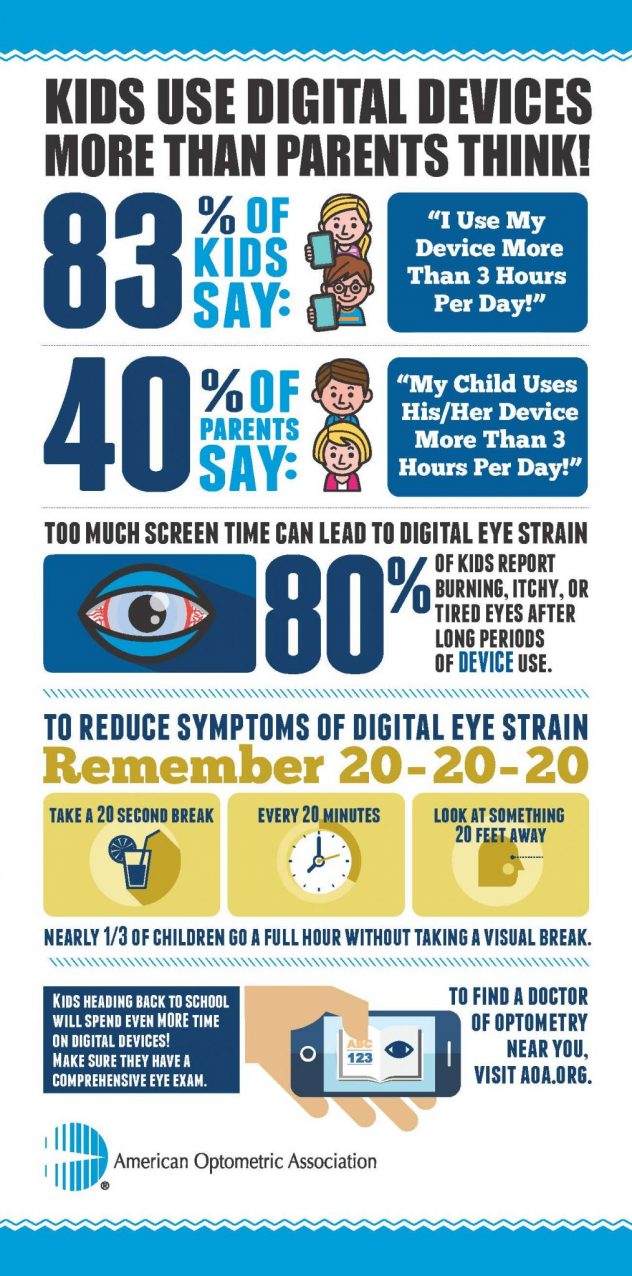
Come get your eyes checked so you can see your “ABC”s. ??✏️ #alamoanaeye

Come get your eyes checked so you can see your “ABC”s. ??✏️ #alamoanaeye
As cold and flu season continues to show its ugly face in our communities, Dr. Inouchi encourages families to practice good hygiene habits to prevent the spread of infectious disease, including conjunctivitis, also known as “pink eye,” which can be easily spread, especially this time of year.
Conjunctivitis is an inflammation or infection of the conjunctiva, the thin transparent layer of tissue that lines the inner surface of the eyelid and covers the white part of the eye. Conjunctivitis is a common eye disease, especially in children, and because it is contagious, it usually starts in one eye and spreads to the other, affecting both eyes.
If your child has conjunctivitis, he or she may experience the following symptoms:
“Conjunctivitis is commonly caused by contagious viruses associated with the common cold,” said Dr. Inouchi. “This type of pink eye can be spread easily, especially among children in school, due to their close proximity to others. However, it’s usually a minor infection and can be treated easily. Conjunctivitis can also occur from a bacterial infection, which can happen if someone touches their eye with unclean hands or if they were using contaminated cosmetics or other facial products.”
In addition, conjunctivitis can be caused from irritants and chemicals (pollen, smoke, and chlorine in swimming pools) or allergens (pet dander or dust mites).
“The appropriate treatment for conjunctivitis depends on its cause,” said Dr. Inouchi. “Conjunctivitis caused by a viral infection can’t be treated with antibiotics; it simply has to run its course, like with the common cold. Cool compresses, extreme care with hygiene, and artificial tear solutions are effective home remedies.”
Bacterial conjunctivitis is usually treated with antibiotic eye drops or ointments prescribed by your eye doctor. Patients could see improvement after three of four days of treatment, but the entire course of antibiotics must be taken to prevent the bacteria from mutating and the conjunctivitis from returning.
Practicing good hygiene habits, including the steps below, is the best way to control the spread of conjunctivitis:
If you suspect your child has conjunctivitis, Dr. Inouchi can determine if he or she has the infection and advise you on treatment options. To make an appointment with Dr. Inouchi, call 808.949.2662
According to the American Optometric Association (AOA), parents severely underestimate the time their children spend on digital devices. An AOA survey reports that 83 percent of children between the ages of 10 and 17 estimate they use an electronic device for three or more hours each day. However, a separate AOA survey of parents revealed that only 40 percent of parents believe their children use an electronic device for that same amount of time. Eye doctors are concerned that this significant disparity may indicate that parents are more likely to overlook warning signs and symptoms associated with vision problems due to technology use, such as digital eye strain.
Eighty percent of children surveyed report experiencing burning, itchy or tired eyes after using electronic devices for long periods of time. These are all symptoms of digital eye strain, a temporary vision condition caused by prolonged use of technology. Additional symptoms may include headaches, fatigue, loss of focus, blurred vision, double vision or head and neck pain.
children surveyed report experiencing burning, itchy or tired eyes after using electronic devices for long periods of time. These are all symptoms of digital eye strain, a temporary vision condition caused by prolonged use of technology. Additional symptoms may include headaches, fatigue, loss of focus, blurred vision, double vision or head and neck pain.
“When parents think about their kids’ mobile consumption habits, they often don’t think about how much time they spend on devices in the classroom,” said Dr. Inouchi. “Each year when school starts we see an increase in kids complaining of symptoms synonymous with eye strain. Essentially, they’re going from being home over the summer with a minimal amount of time spent using their devices back to a classroom full of technology, and their time on devices often doubles, leading to a strain on the eyes.”
Optometrists are also growing increasingly concerned about the kinds of light everyday electronic devices give off – high-energy, short-wavelength blue and violet light – and how those rays might affect and even age the eyes. Today’s smartphones, tablets, LED monitors and even flat screen TVs all give off light in this range, as do cool-light compact fluorescent bulbs. Early research shows that overexposure to blue light could contribute to eye strain and discomfort and may lead to serious conditions such as age-related macular degeneration (AMD), which can cause blindness.
When it comes to protecting eyes and vision from digital eye strain, taking frequent visual breaks is important. Children should make sure they practice the 20-20-20 rule: when using technology or doing near work, take a 20-second break, every 20 minutes and view something 20 feet away. According to the survey, nearly one-third (32 percent) of children go a full hour using technology before they take a visual break instead of every 20 minutes as recommended.
Additionally, children who normally do not require the use of eyeglasses may benefit from glasses prescribed specifically for intermediate distance for computer use. And children who already wear glasses may find their current prescription does not provide optimal vision for viewing a computer screen. An eye doctor can provide recommendations for each individual patient.
Dr. Inouchi suggests the following guidelines to help prevent or reduce eye and vision problems associated with digital eye strain:
Dr. Inouchi recommends every child have an eye exam by an optometrist soon after 6 months of age and before age 3. Children now have the benefit of yearly comprehensive eye exams thanks to the Pediatric Essential Health Benefit in the Affordable Care Act, through age 18.
“Parents should know that vision screenings miss too many children who should be referred to an optometrist for an eye examination to correct vision,” added [NAME]. “Eye exams performed by an eye doctor are the only way to diagnose eye and vision diseases and disorders in children. Undiagnosed vision problems can impair learning and can cause vision loss and other issues that significantly impact a child’s quality of life.”
For additional information on children’s vision and the importance of back-to-school eye exams, or to make an appointment for your child with Dr. Inouchi for a comprehensive eye exam, visit call 808.949.2662.
I love this video…
One in four children has a vision problem, but the signs may not be so obvious. Only an eye doctor can tell for sure. Since 80 percent of all childhood learning happens through the eyes, one thing is crystal clear: good grades and good vision go hand in hand.
As technology use continues to rise both at home and in classrooms, parents severely underestimate the time their children spend on digital devices. A survey by the American Optometric Association (AOA) found that 83 percent of children between the ages of 10 and 17 say they use an electronic device for at least three hours each day. However, a separate AOA survey revealed that only 40 percent of parents believe their children use an electronic device for that same amount of time. This disparity is concerning to eye doctors and may indicate that parents are more likely to overlook warning signs associated with vision problems due to technology use.
Digital eye strain, a temporary condition caused by prolonged technology use, can cause children to experience burning, itchy or tired eyes, headaches, fatigue, loss of focus and blurred vision.
To protect vision from digital eye strain, children should make sure they practice the 20-20-20 rule: take a 20-second break, every 20 minutes and view something 20 feet away. Additionally, the following recommendations can help prevent or reduce digital eye strain:
Optometrists are also concerned about high-energy, short-wavelength blue and violet light emitted from everyday electronic devices and how those rays might affect and even age the eyes. Early research shows that overexposure to blue light could contribute to eye strain and discomfort and may lead to serious conditions such as age-related macular degeneration (AMD).
The AOA recommends that every child have an eye exam by an optometrist soon after 6 months of age and before age 3. The Pediatric Essential Health Benefit in the Affordable Care Act now provides children through age 18 with yearly comprehensive eye exams.